Schedel’s Map: The Last View of the Old World
A historic map shows us where we’ve been, not only geographically but also in terms of the extent of our knowledge, our beliefs and even our technology. Two works coming up for auction in our December 5 sale of Maps & Atlases, Natural History & Color Plate Books illustrate the state of mapmaking in a crucial time in human history, and how knowledge changes the way the world looks.
According to the University of Cambridge’s Library, Liber Chronicarum, more popularly known as the Nuremberg Chronicle is “one of the most important German incunables and the most extensively illustrated book of the fifteenth century.” Through 1,809 woodcut illustrations of events, as well as views and topographies, the work tells the history of the world through the lens of the Bible. It was written in Latin by doctor and humanist Hartmann Schedel, and printed by Albrecht Dürer’s godfather, Anton Koberger, in 1493. Another edition came out later in the same year, translated into vernacular German by George Alt.
The innovative work is set up in such a way that illustrations and text appeared in concert on the same page, and appeared to interact. Two maps were used to illustrate the text: one of the known world, and one of Germany. The map of the world is especially interesting because, being printed in 1493, Christopher Columbus had just barely returned from his journey; it is one of the last maps of the known world to be published without the Americas. Additionally, according to Queens’ College Library, it was “one of only three fifteenth-century maps showing Portuguese knowledge of the Gulf of Guinea of about 1470.”
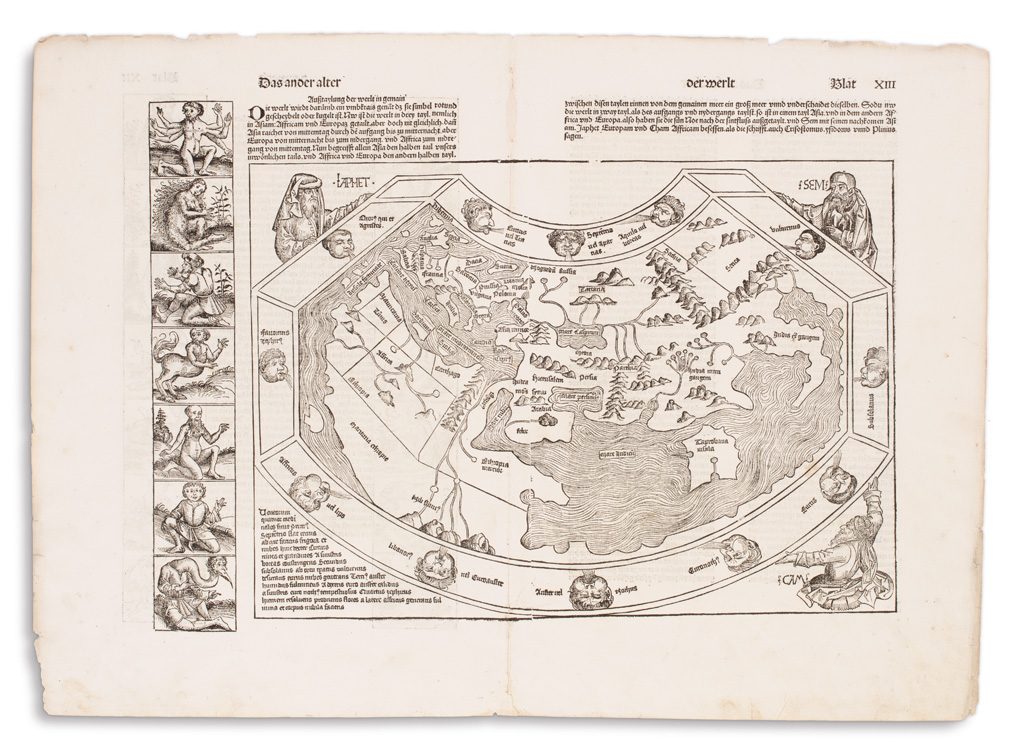
Lot 204: Hartmann Schedel, Das Ander Alter Der Welt, double-page woodcut map, Nuremberg, 1493. Estimate $6,000 to $9,000.
The map in question presents a Ptolemaic projection of the world, based on the first-century writings of Ptolemy. Beyond its geographical points of interest, the map is flanked to the left by a cast of bizarre characters, including a snake-necked man, that one might expect to find at the edges of the world.
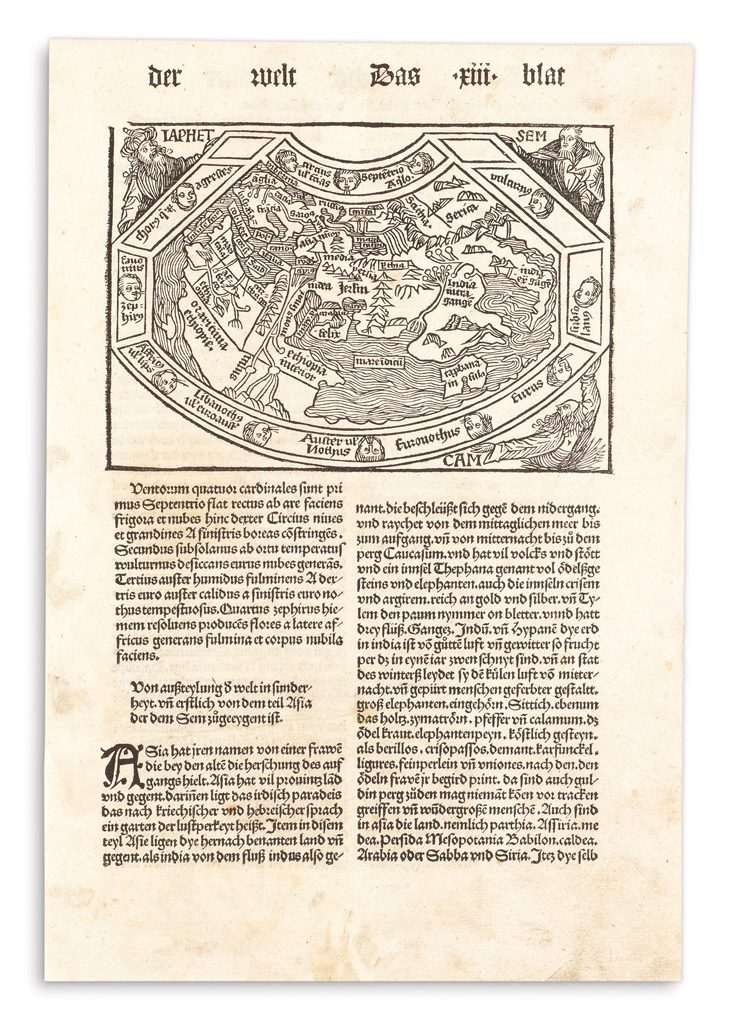
Lot 205: Johann Schönsperger, Der Werlt, woodcut map, Augsburg, 1496. Estimate $3,000 to $5,000.
In an exhibition of the Nuremberg Chronicles at Vassar College, Professor Ronald Patkus suggests in the catalogue that dwindling sales of the Schedel edition could have been the result of professional undercutting: “Between 1496 and 1500, Johann Schönsperger produced three editions: two in German, and one in Latin. These books followed the Nuremberg printings very closely in terms of both text and illustration, but they were offered in a smaller format (quarto), with smaller type and newly-made illustrations. Schönsperger’s efforts were not illegal because no copyright laws existed at the time, but they reveal the vagaries of early printing, where possibility for one could mean difficulty for another.”
The Schönsperger edition includes a greatly reduced version of Schedel’s world map. Though only about a quarter of the size of the original, the miniaturized map loses little of its detail. However, the left-hand panel of odd creatures is left off.
According to our Maps & Atlases Specialist Caleb Kiffer, “The New World did not appear on a printed map until the publication of Giovanni Conarini’s world map in 1506, showing Cuba and Hispaniola adjacent to Japan. This is known to exist in only one example. In 1507 Johann Ruysch published an engraved world map showing much the same geography, however it had a larger print run as the map is very rare, but still available.”
Browse the full catalogue.
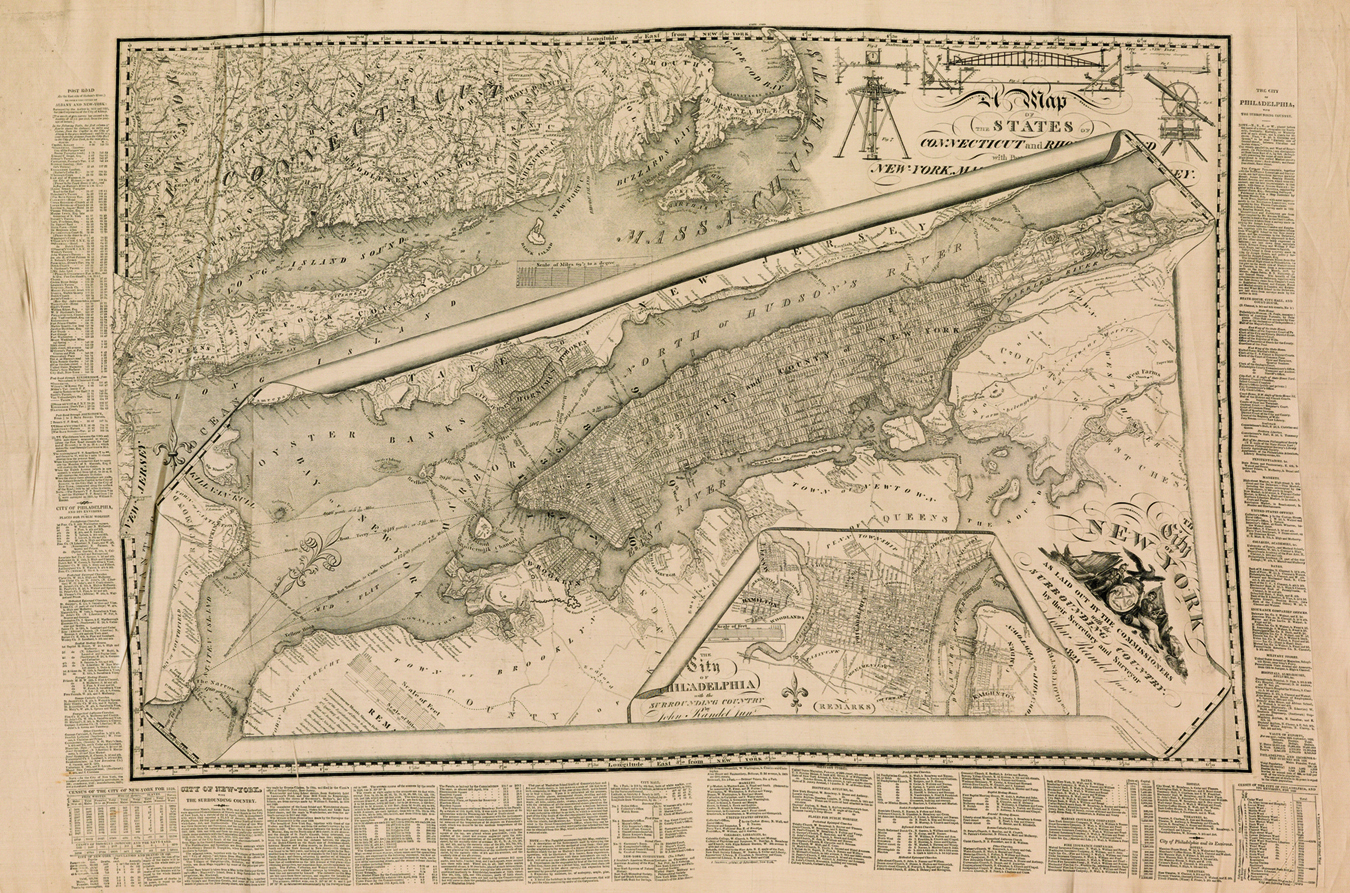
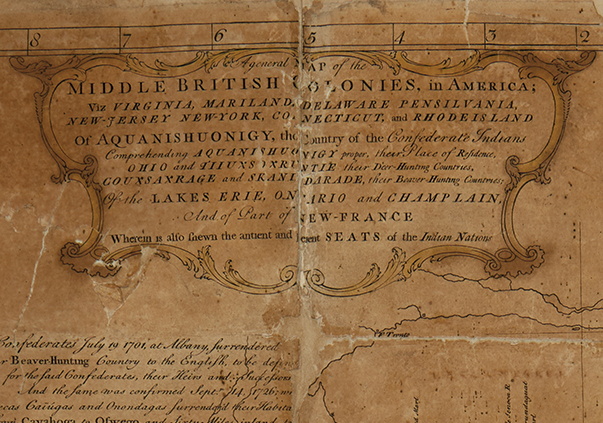
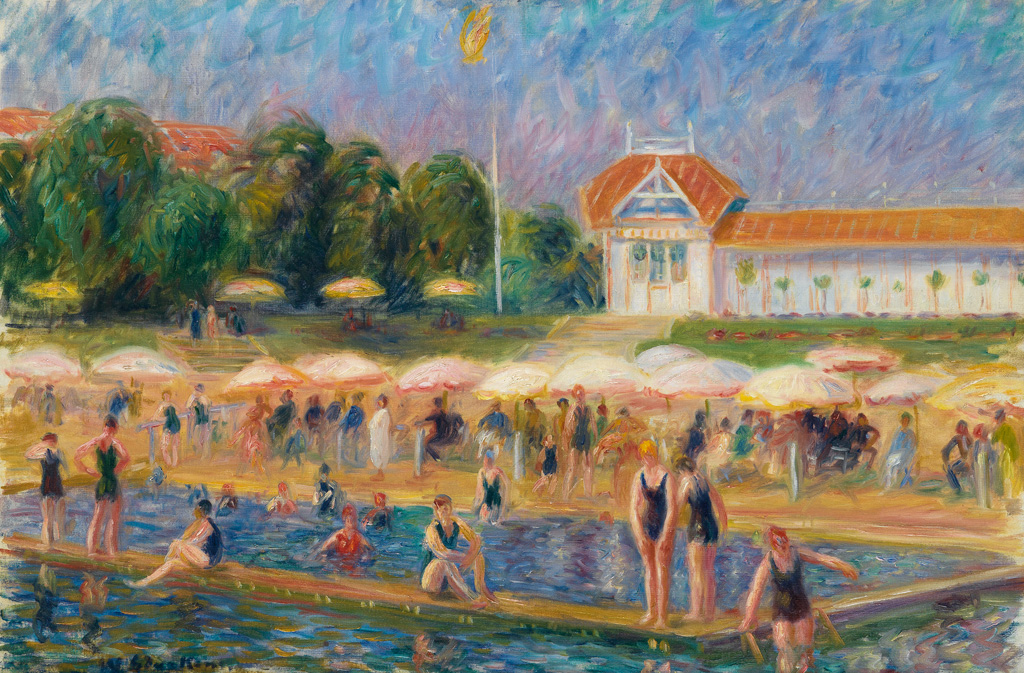










![Grace Meschery-McCormack shares about two copies of Fernando de Rojas’s ‘La Célestine,’ including a limited edition copy illustrated by Pablo Picasso.
At auction April 22. Learn more about the works at the link in our bio.
#Rarebooks #rarebookdealer #antiquarianbooks #auctions
_______________________________________
Music Credit:
Schubert - Piano Quintet in A major ‘The Trout’, D. 667 - IV. Andantino – Allegretto
Music provided by Classical Music Copyright Free on Youtube [https://tinyurl.com/visit-cmcf]
Watch: • Schubert - Piano Quintet in A major ‘...]](https://scontent-iad3-1.cdninstagram.com/v/t51.75761-15/491443494_18499096345036585_5935932878956098058_n.jpg?stp=dst-jpg_e35_tt6&_nc_cat=107&ccb=7-5&_nc_sid=18de74&_nc_ohc=OlBShB8qEWAQ7kNvwHbrXqd&_nc_oc=Adn09Fh3YL-11OkpQcrYGgFN9beLpm0IfGUn2bwN7iJs6d4v8qMeP8kSYmCw82y2ewU&_nc_zt=23&_nc_ht=scontent-iad3-1.cdninstagram.com&edm=AM6HXa8EAAAA&_nc_gid=lfY4_2vE-yX6Vkb-vQvT3Q&oh=00_AfEAHFW3zs3K6R91vJtUnvkHnVOVTzShV6Nz4h29OEu07Q&oe=681A3E11)




